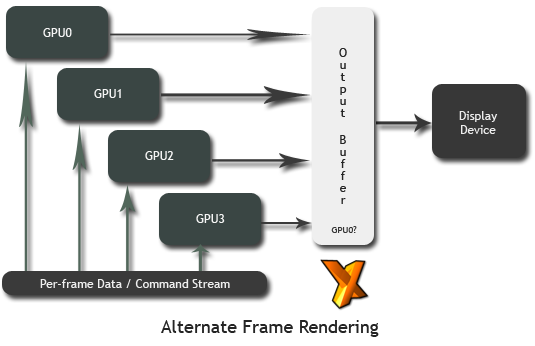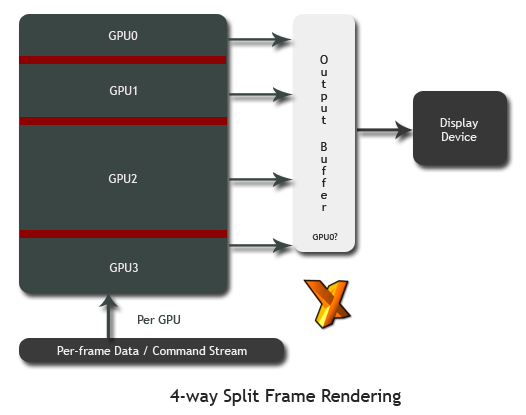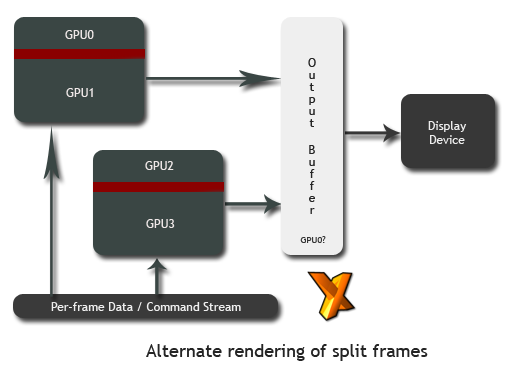New Rendering Modes
The new rendering modes afforded by having four GPUs available should be fairly obvious. You can have each GPU render a frame on its own, in round-robin alternate fashion, or they can all assist in rendering the same frame, or you can combine the two techniques using GPU pairs.4-GPU Alternate Frame Rendering

Here, each device works on its own frame, fed by data and a command stream managed by the driver, with each GPU passing finished frames to the designated primary chip for display (usually GPU0, but not fixed that way).
The mode works the way it does with 2-GPU SLI.
4-GPU Split Frame Rendering

Each GPU works on the same frame, as it does with 2-GPU SLI. Output is done via the designated primary GPU for display on your display device. Each GPU receives a transformed set of geometry to work on, clipped at the SFR boundary, with each GPU maintaining complete copies of all other per-frame data with which to finish frame rendering.
The mode is a simple extension of the same 2-GPU SFR method.
4-GPU Alternate SFR

Boards work on frames in SFR fashion, with round-robin alternate rendering of those. The primary GPU does frame display as before. So each GX2 does SFR, then the driver schedules AFR of frames in that way, per GX2.
It's the only 'new' acceleration mode offered by Quad SLI, but given SFR as the best mode to accelerate an application, you get the extra benefit of AFR performance scaling on top of that, without any real complications.
So for an application that prefers SFR (such as Far Cry), AFR of SFR could (and maybe should, without much issue) be the preferred mode with Quad SLI setups.
The new acceleration mode is joined by a pair of new SLI AA modes, so let's look at those.









